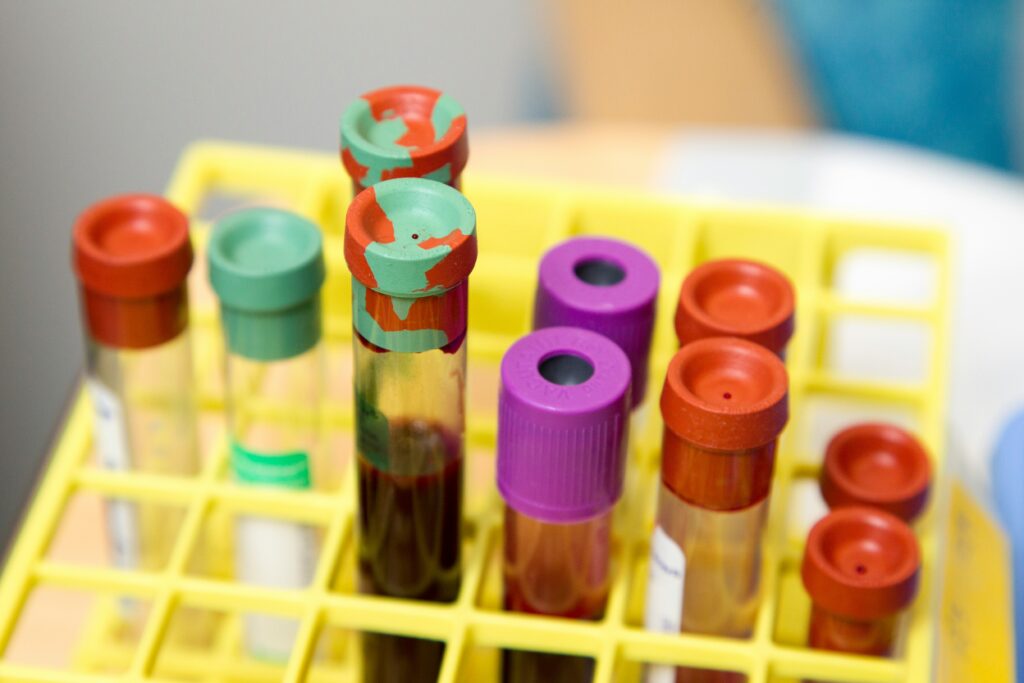‘Hypotonic polyuria’ is when you produce large amounts of dilute urine and is a symptom of three possible endocrine conditions:
- AVP deficiency (AVP-D, previously known as central diabetes insipidus)
- AVP resistance (AVP-R, previously known as nephrogenic diabetes insipidus)
- Primary polydipsia (PP)
Finding out which condition is responsible for causing hypotonic polyuria and subsequently managing this condition can pose challenges for clinicians. There have been advances in diagnostic techniques in recent years and it is becoming more common that clinicians will use a technique called ‘copeptin measurement’ to investigate the root cause of hypotonic polyuria.
A recent research article, co-authored by Deborah Cooper (a Pituitary Foundation Trustee), Professor John Wass, and Professor Miles Levy (members of our Medical Committee) looks at three different patient cases where copeptin measurement was used to diagnose an endocrine condition. These cases highlight how copeptin measurement can be a better diagnostic tool than other techniques, such as the water deprivation test. In this blog post, we explore what copeptin is, how it can be used for diagnosis and why it may be preferred over other techniques, such as the water deprivation test.
What is copeptin and how can it be used to diagnose endocrine conditions like AVP-D?
Arginine vasopressin (AVP) is a protein made in the body using many smaller protein building blocks. Its normal function is to prevent the passing of excessive amounts of urine. If there are issues in the production or function of this protein, it can lead to AVP deficiency.
One of the protein building blocks used to make AVP is a small protein called copeptin. Copeptin is released in the body proportionately to AVP, meaning that the amount of copeptin in the blood mirrors the amount of AVP. As copeptin is easier to test for in blood, this makes it a good way to assess how much AVP the body is producing. If there is a low level of copeptin in the blood this would also mean there is also a low level of AVP. Therefore, measuring copeptin can be used to help diagnose AVP-D, AVP-R or primary polydipsia (PP).
Why can’t we measure AVP instead of copeptin?
It can be very difficult to accurately measure the amount of AVP in the blood, for different reasons:
- AVP in samples breaks down quickly, making it hard to measure accurately once the sample is taken. Copeptin is more stable than AVP, meaning it takes longer to break down and therefore is easier to measure accurately
- There are not many tests available to measure AVP and the ones available take a long time to give results
- A large amount of AVP in the blood is not detected by tests, which can give incorrect readings
Why might measuring copeptin be better than a water deprivation test?
Anyone who has experienced a water deprivation test will be aware of how uncomfortable they can be. The test usually involves stopping someone from drinking water, usually for up to 8 hours but sometimes for longer. This is to assess how concentrated their urine becomes.
As well as being very uncomfortable, a water deprivation test may also not have complete accuracy when being used to differentiate between whether someone has AVP-D or PP. Also, if a patient has PP then there may be very large amounts of water in their system from having drunk so much. This means it can take even longer for them to become dehydrated for this test, which can be very uncomfortable.
What type of diagnostic test is right for you?
Your GP or endocrinologist will choose the right diagnostic tests for you based on your symptoms and medical history. Your clinician will also assess your fluid intake and output over 24 hours, for a couple of days.
Copeptin tests are currently used by the NHS and it is possible that patients may be able to request a certain diagnostic test, although it will depend on other factors (as mentioned above) as to whether certain tests can be used or not.
Overall, using copeptin levels to diagnose vasopressin-related endocrine disorders can provide more accurate and timely diagnoses, which can help ensure that patients receive appropriate care and management of their symptoms. Historically, these conditions have proved difficult to diagnose so hopefully advancements in diagnostic processes will mean that endocrinologists will be better able to diagnose and manage these conditions.
You can read the full article here. You can also find out more about AVP-D and AVP-R, including diagnosis and treatment of these conditions.
References
- Approach to the patient with suspected hypotonic polyuria; JCEM; 2025;110(2);
- Copeptin and its role in the diagnosis of diabetes insipidus and the syndrome of inappropriate antidiuresis; Clin Endocrinol (Oxf). 2019;91(1):22–32;
- The emerging role of copeptin; Clin Biochem Rev. 2021;42(1):17–25








